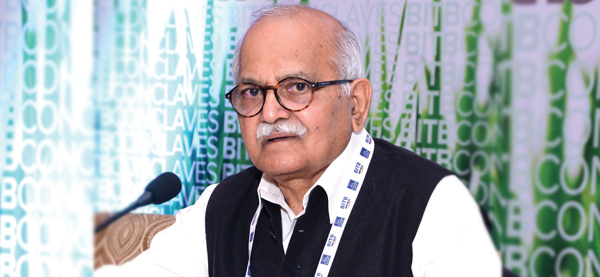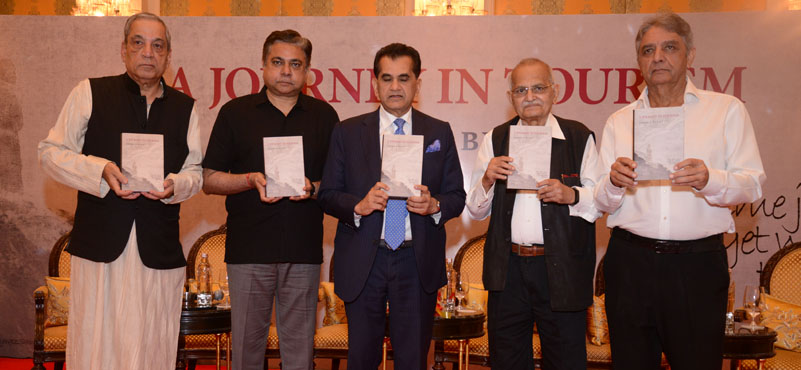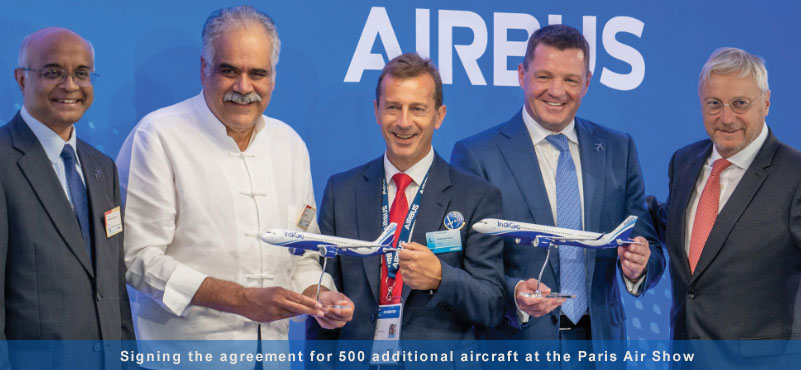S K Misra, Chairman, ITRHD, in his keynote address shared his experiences of how proper planning and coordination, coupled with strong local involvement could alter the sagging fortunes of villages. He batted for better infrastructure in nation’s hinterland and urged the government to examine the feasibility of ‘SMART villages’ concept, at least on a pilot basis before nationwide implementation. Excerpts from his insightful address:

CHAIRMAN, ITRHD
“We have been focussing on the beaten track for too long and it is time that we moved in different directions. When we talk of the rural sector or rural development our first thoughts go back to Gandhi and I would like to start with a quote by him. “Just as the Universe is contained in its cells, so is India contained in its villages.”
This is as true today as it was in Gandhi’s time. Ask any Indian where he or she came from and chances are that you’ll be given the name of an ancestral village even if the speaker has been residing in a city for 3 generations. Unfortunately, adequate attention has not been given to the challenges of meeting the needs of the rural areas. Only recently have we started to see increasing political recognition of the fact that India’s overall development is linked with extent to which the rural sector is brought under the mainstream and is able to contribute substantially to the national economy.
Rural areas face daunting challenges
Those of us who work and live in our modern, urban areas, hardly realise, that 700 million of our fellow citizens still reside in rural areas or that there are more than 600,000 villages and countless small settlements scattered throughout our 29 states and 7 union territories. And in spite of the romanticised nostalgia that many of us feel for our rural origins and despite the beauty of the areas itself, more than 30% of the rural population suffers from poverty and an estimated 15 million rural families are both poor and landless. This has led to urban areas getting more and more clogged as rural citizens flee their traditional habitat in search of what they hope will be a better life in the city. Ironically as they are escaping the lack of civil infrastructure, the mass exodus is helping to add to the woes of the cities which are increasingly suffering from pollution, shortages of resources and facilities like housing, development of slums and sanitary conditions etc. In the process not only does the gap between the rural and the urban sectors widen but problems increase on both the sides.
Rural areas suffer greatly from this migration. Traditional crafts are decimated as their skilled practitioners leave for urban employment that waste their finely-honed talents but at least provides a more dependable income. In village after village, the younger generation leaves in search of greener pastures and the age-old attachment to the soil gives way to frustration and despondency.
In turning to employment in industrial units, construction and low-level service jobs in the city, the transplanted villager not only loses a sense of identity and confidence but often begins to suffer health problems. One study in-fact has concluded that the migration in to urban areas is associated with an increase in obesity and diabetes, which drive other risk factors. It should be obvious therefore, that there is urgent need to come to grips with the urban-rural divide as it threatens to reach alarming proportions. Some corrective measures have been adopted by the government in recent years but those of us who work in villages, do not see any significant change for the better.
Time to examine ‘smart village’
What is really needed is a direct, co-ordinated and comprehensive approach to rural problems. For instance, the smart cities program that has been launched by the government with much fan-fare is a very commendable initiative. At the same time a ‘smart village’ project must also be launched, even on a pilot basis, to begin with. It would inspire confidence amongst the residents, lead to community involvement and overall regeneration. We all recognise the great impact that tourism can have on development.
In recent years, there has been a growing recognition that this impact need not be limited to well-known circuits or golden triangles but can also result in tremendous gains for rural areas as well. Both international and domestic tourists are increasingly looking for experiences of ultimate luxury and the authentic experience of the rural life has a growing appeal. Our rural areas may suffer from poverty and lack of many things but are often extremely rich in one particular asset, that is heritage. In the rural context, heritage does not mean only monuments and architecture but encompasses crafts, music, performing arts, cuisines, rituals, history, natural environment, agriculture., lifestyle and other resources, both tangible and in-tangible. There is much talk of alternate and rural tourism but the ground reality is that most of the potential remains unexplored.
There is a need for an overall change in our mindset. At present, rural tourism does not figure actively in state tourism policy. It does find mention in the policy document of the Government of India but what been the result? Most of these initiatives in this direction are emerging from the private sector with only a small number of exceptions by some state governments. One such private initiative demonstrates the potential and needs to be mentioned. Pandurang Taware, founder of Maharashtra’s Agri Tourism Development Corporation (ATDC), and can be regarded as a true pioneer in the field. Established in one village, Baramati, in 2005, ATDC has in the short time grown to encompass 500 trained farmers and 152 agri-tourism locations in the state.
The concept of agri-tourism indicates agriculture and traditional culture with a pollution free environment thus providing a personal experience of the rural lifestyle. ATDC offers visitors the opportunity to experience local agriculture practices while also becoming acquainted with an authentic rural lifestyle, local music, food, dances, rituals, festivals and arts and crafts. It is a way for Urban Indians to discover their real or symbolic roots as well as a way for foreigners to experience another reality. If the lessons learnt from this brilliant initiative are to applied on a broader canvas there is need for a comprehensive and well-co-ordinated policy taking various stakeholders on-board.
A holistic approach, local involvement needed
Holistic approaches need to be developed ranging from infrastructure, training programs, finding local leadership that can add to the catalyst for change, the involvement of women and, of course, financing. Tourism automatically brings in economic benefits to society, primarily in regards to increased development but also in opening up economic potential for related activities in the area. Today these benefits are mostly accrued to urban areas and well known tourist areas. If a deep thrust can be given to promoting and developing tourism in rural areas, it can be one of the most effective instruments of rural re-generation. Although, many private individuals are taking up the challenges on their own initiatives, developing a truly comprehensive and nationwide movement requires a supportive, effective and meaningful co-ordination between many agencies concerned including the central government, central government ministries and state government departments of rural development. In addition, panchayats and other local bodies need to be involved. There is a vast vacuum waiting but if we can evolve our rural communities and tourism activities on a large scale, it will be a win-win situation for both the tourist industry and for the millions living in the villages.
The role of government should primarily be that of a facilitator. Insuring a steady flow of funds where required, developing policy initiatives, organising training programs, developing infrastructure, particularly in regard to connectivity, drainage, assured power supply and adequate publicity and finances to keep the momentum going. Once the basic requirement have been met and the momentum established, local residents will take up the task with great enthusiasm. If basic facilities are ensured, tourists who desire to see the authentic India will start coming in much larger numbers. Repeat visits and new clients will be acquired by word of mouth. In addition to the revenue and employment generated by local hosts, many other direct and in-direct benefits and opportunities will accrue. The rich resources of our diverse rural areas can cater a variety of special interests, be it religious, anthropological, agricultural and so forth. Farm tourism constitutes a special category of its own.
Tourism and social implications
With increased income, better living conditions, easy accessibility, urban centres for marketing products and availing of other products, the incentive to move from their rural homes will no longer exist. In the long run, rural tourism can make a significant contribution to arresting migration, making the villages attractive to their residents and might even result in some reverse migration. India is hundreds and thousands of villages and promotion of tourism in rural areas should necessarily be selective. Each and every village will not qualify. Those villages that are unique in some aspect and offer basic level of infrastructure will be more suited. The basic requirements of success would be having something for the visitors to see, experience, do or buy. Another aspect is to have clean, hygienic and comfortable places to stay and eat with basic sanitary facilities. In my view the most essential elements in planning for rural destinations would include the following:
* Creativity and innovation are essential.
* Activities, attraction and adventure can encourage visitors to stay longer.
* Culture and heritage are the strongest magnus.
* Partnership and collaboration are essential if rural areas are to benefit.
Establishing a rural tourism network will have a synergistic effect, benefiting all players. Once tourists start coming, local initiative combined with governmental support will ensure further augmentation of facilities, traction and activities including the development of social development measures in the fields of health, education and employment. Proximity to existing tourist destinations will be an added advantage as most foreign tourists with limited time at their disposal and perhaps a limited budget also would be attracted to spend an extra day or two to get an authentic experience, if they can do so easily. The catalytic effect of tourism over the course of time makes itself felt and this should subsequently be a motivating factor for policy makers. Of course, one should not expect wonders as results will not flow overnight. Development, particularly of the infrastructure, takes time. When the concerned villages take on a different colour, it will not go unnoticed and will motivate neighbouring villages to create attractions so that they also avail of the benefits. This spin off effect will bring in more villages in the fold. The experience of many foreign countries, both developed and developing, points in the same direction.
New technologies could aid our efforts
Tourism and rural development can be seen as two sides of the same coin. There is urgent need however for all stake holders to join hands and evolve strategies that remove bottlenecks and roadblocks and create new avenues for long terms sustainable tourism.
Co-ordination is the key to success in any major activity but in the field of tourism sadly, it has not achieved the desired results despite constant talks and recommendations being made regarding the need for a co-ordinating body at the highest level.
It is certainly not impossible to achieve this provided we have the right people at the right place who are sufficiently motivated to move away from the beaten track.
The scenario today is not what it was even 10 years back. We have many positive factors in our favour, especially new technologies and digital revolution that allows us to communicate freely across the globe. Looking to the future, in states that have not taken up the initiative, a small number of pilot projects will demonstrate the potential. These will need to be well planned with inputs from relevant agencies such as agricultural universities, banking agencies, NGOs and concerned corporates. They need to include training programs, infrastructure development, adequate and timely funding as well as simplification. Tours of selected group of farmers and other successful projects could provide inspiration. To give greater focus to this concept, each state government may consider a rural tourism development corporation with a co-ordination group comprising other relevant groups and agencies and a specially designated officer from the Ministry of Tourism.




































